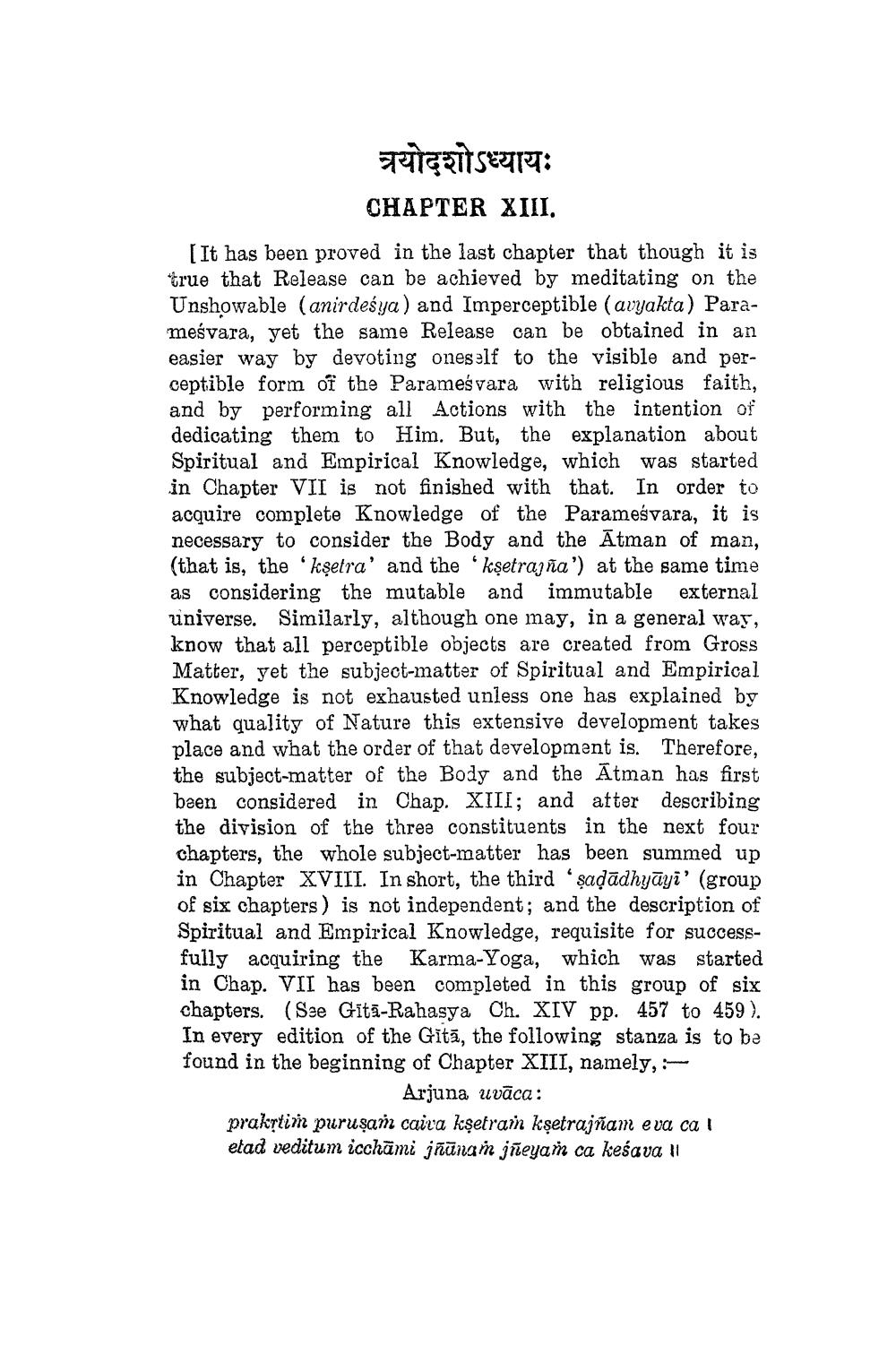________________
त्रयोदशोऽध्यायः CHAPTER XIII.
[ It has been proved in the last chapter that though it is true that Release can be achieved by meditating on the Unshowable (anirdeśya) and Imperceptible (avyakta) Parameśvara, yet the same Release can be obtained in an easier way by devoting oneself to the visible and perceptible form of the Parameśvara with religious faith, and by performing all Actions with the intention of dedicating them to Him. But, the explanation about Spiritual and Empirical Knowledge, which was started in Chapter VII is not finished with that. In order to acquire complete Knowledge of the Parameśvara, it is necessary to consider the Body and the Ātman of man, (that is, the 'kşetra' and the 'kşetrajña') at the same time as considering the mutable and immutable external universe. Similarly, although one may, in a general way, know that all perceptible objects are created from Gross Matter, yet the subject-matter of Spiritual and Empirical Knowledge is not exhausted unless one has explained by what quality of Nature this extensive development takes place and what the order of that development is. Therefore, the subject-matter of the Body and the Ātman has first been considered in Chap. XIII; and after describing the division of the three constituents in the next four chapters, the whole subject-matter has been summed up in Chapter XVIII. In short, the third 'şağādhyāyi' (group of six chapters) is not independent; and the description of Spiritual and Empirical Knowledge, requisite for successfully acquiring the Karma-Yoga, which was started in Chap. VII has been completed in this group of six chapters. (See Gītā-Rahasya Ch. XIV pp. 457 to 459 ). In every edition of the Gitā, the following stanza is to be found in the beginning of Chapter XIII, namely,
Arjuna uvāca: prakrtim puruşan caira kşetrain kşetrajñam eva ca ! etad veditum icchāmi jñānam jseyam ca keśava 11




